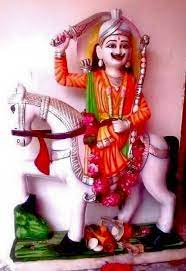Chitai Golu Devta Temple is in the town of Almora in the
Indian state of Uttarakhand. The temple is dedicated to Golu Devta, also known
as God of Justice, who is revered as the guardian deity of the Kumaon region.
The temple is known for its intricate carvings and beautiful architecture. It
is a popular pilgrimage site and attracts thousands of devotees from all over
the country. The temple is also known for its annual fair, which is held in the
month of April and is attended by many people. The temple is believed to grant
wishes and provide justice to those who seek it.
History
The Chitai Golu Devta Temple in Almora has a rich history
and cultural significance. According to local legends, Golu Devta was a prince
who lived in the Kumaon region during the 18th century. He was known for his
fairness and justice and was revered by the people as a protector and guardian.
It is said that Golu Devta was falsely accused of a crime
and was sentenced to death. As he was about to be executed, he made a wish to
be remembered and revered as a god of justice who would continue to protect the
people even after his death. His wish was granted, and he became known as Golu
Devta.
The temple was built in his honor, and people began to visit
the temple to seek his blessings and to have their wishes granted. The temple
also became a place of pilgrimage for those seeking justice. The temple has a
large bell and people tie a bell with a red thread and make a wish to God Golu,
It is believed that if their wish is fulfilled, they come back to temple to
give the bell back to temple as a gratitude.
Over the years, the temple has been renovated and expanded,
but it still retains its original architectural style and cultural
significance. It is now a popular tourist destination and an important part of
the cultural heritage of the Kumaon region.
Best Time To Visit
The best time to visit the Chitai Golu Devta Temple in
Almora would depend on your personal preferences and the purpose of your visit.
Here are a few things to consider:
- The annual fair: The temple is famous for its annual fair, which is held in April and is attended by thousands of people. This fair is a good time to visit if you want to experience the cultural and religious significance of the temple.
- Weather: Almora has a cool and pleasant climate throughout the year, but the best time to visit would be from April to June and from September to November when the weather is mild and comfortable. The monsoon season from July to August and winter from December to March is not suitable to visit.
- Crowd: The temple is a popular pilgrimage site, and the number of visitors increases during festivals and holidays. If you prefer to avoid crowds, it's best to visit during the weekdays.
- Personal preference: If you're interested in photography, then the best time to visit would be during the monsoon season when the temple and surroundings are lush and green.
Overall, the best time to visit Chitai Golu Devta Temple
would be in the months of April and September to November when the weather is
pleasant, the temple is well decorated, and the annual fair is held.
Pooja Offered to Golu Devta
The Chitai Golu Devta Temple in Almora, Uttarakhand, India,
offers several pujas (prayer) rituals and ceremonies to its devotees. Some of
the main puja rituals offered at the temple include:
- Abhishek Puja: This is a ritual in which the idol of Golu Devta is bathed with milk, curd, honey, and other auspicious items. It is a powerful ritual that brings blessings and prosperity to the devotees.
- Aarti: Aarti is a ritual that involves lighting a lamp and offering it to the deity while singing hymns and prayers. It is a way to express gratitude and devotion to the deity.
- Bell Wishing: This is a unique ritual offered at the temple where devotees tie a bell with a red thread and make a wish to Golu Devta. It is believed that if their wish is fulfilled, they come back to temple to give the bell back to temple as a gratitude.
- Hawan: This is a ritual that involves offering prayers to the deity through fire. It is one of the most powerful ways of seeking blessings and blessings.
How to Reach ?
To reach Chitai Golu Temple, you can follow these steps:
- If you are traveling by air, the nearest airport is Pantnagar Airport, which is about 65 km away from the temple. From there, you can hire a taxi or take a bus to reach the temple.
- If you are traveling by train, the nearest railway station is Kathgodam Railway Station, which is about 55 km away from the temple. From there, you can hire a taxi or take a bus to reach the temple.
- If you are traveling by bus, there are regular bus services available from major cities in Uttarakhand to Almora. From Almora, you can hire a taxi or take a bus to reach the temple.
- If you are traveling by car, you can use Google Maps or any other navigation app to reach Chitai Golu Temple.
Note: It is a good idea to check for the latest travel
information and road conditions before starting your journey.



Comments
Post a Comment